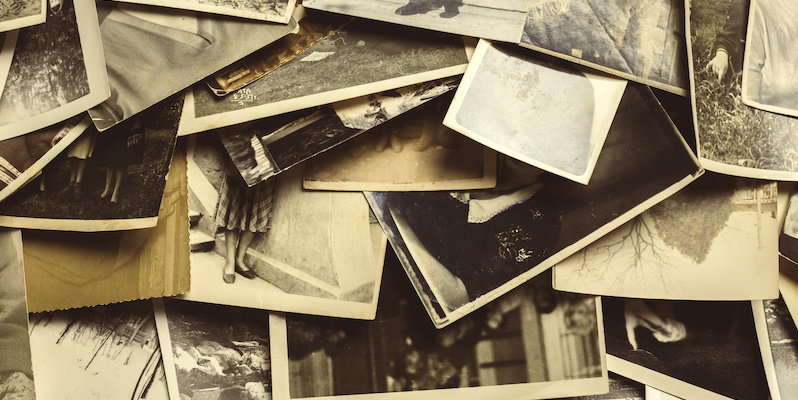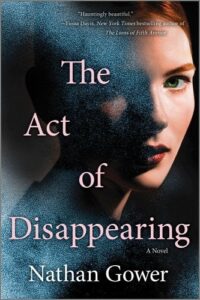Pictures tell stories. We learn this from our earliest days. Our parents read to us—lulling us towards sleep in that sing-song cadence we know so well—and we are enraptured not only by the words, but with the images that compliment them. Sure, we may outgrow our love of picture books, but we never forget the indelible joy of seeing a narrative unfold before us. Perhaps that’s why so many of us love comic books and graphic novels, and why nearly all of us are drawn to TV and film.
But pictures don’t have to be expressly tied to a complimenting narrative in order to tell a story. For instance, think of a favorite photograph—or better yet, go find one. (Yes, right now. Look in the frames on your desk or your wall, scan the covers on your bookshelves, or even (sigh) scroll through your phone if you must.) Find a photograph that compels you to know more—about the setting, about the subject, even about the person on the other side of the camera. How many stories could that one photograph tell?
In his short tour de force Camera Lucida, French writer and philosopher Roland Barthes attempts to make sense of his own interest in photography, and in doing so, suggests for the reader a framework for understanding photographs as a distinctly narrative experience. Years ago, I read Barthes’s work in tandem with W.G. Sebald’s stunning novel Austerlitz, a book which masterfully uses photographs—their materiality and notion they are imbued with memory—as a narrative device. I’ve been obsessed with reading photographs as texts ever since.
My debut novel, The Act of Disappearing, is grounded by an opening image: a photograph taken in 1964 of a woman falling from a train bridge into the Ohio River, clutching to her chest what appears to be a baby. The rest of the book is a race to discover all the mysteries embedded in that image. Of course, the use of photographs as a plot device in mystery novels (in general) and crime fiction (in particular) is a staple of the genre: crime scenes, witness testimony, missing persons reports—opportunities abound for photographs to become an integral part of the discovery process for both the characters and their readers.
But beyond constructs of narrative device, photographs can serve as a primary means of inspiration for the subject matter of the story itself. As Barthes suggests, the subject of any photograph is transformed into a kind of death as soon as the shutter clicks—that is, once the light of a fleeting moment is caught on film, the object observed in the picture can never again be precisely the same as it was when entombed on the developed film. When thought of this way, photographs are interesting not only for the way they invite a reading of the image as captured in the now, but also the imaginings they demand of the before and after the picture is taken. Perhaps an example will help. It’s a famous one—written about countless times—so maybe you’ll know it.
In 1947, photography student Robert Wiles witnessed a young woman jumping to her death from the observation platform of the Empire State Building. Within minutes of the fatal act, Wiles captured an image of the woman, 23-year-old Evelyn McHale, in a photograph that has often been dubbed—and I’m careful to quote here—“The most beautiful suicide.” I have to admit: despite my reflexes against that description, I understand it. In the photograph, McHale is reposed atop the crumpled roof of a limousine as if she were positioned there for that precise shot: makeup perfectly applied, legs gracefully crossed at the ankle, face serene. It is a haunting image for its uncanny amalgamation of horror and beauty.
Like all photographs, the image captures the now: the precise moment when the shutter clicks, a singular instance that can never be recreated. But the image also invites a reading of the before: Who was Evelyn McHale? What was her story? Did she know what the day would hold when she put on her makeup that morning? What tragic events led her to the top of the building, and what was going through her mind just before she stepped off?
Likewise, and in some ways more interestingly, the photograph invites a reading of the after: what are the consequences of that moment, and for whom? Who are the people most intimately connected with this woman? What will their lives be like without her? What will they feel when they see the image of her body published and republished again and again? Who will feel guilt over her fatal act, and in what ways is that guilt justified or not?
It’s very likely that these types of questions emerge in us from the moment when see such a photograph—whether we are consciously aware of them or not. But when we find those rare, special pictures that compel us to return to them again and again, we might find ourselves looking for deeper meaning and sharper angles—stories that are less self-evident, more surprising.
That’s the magic of drawing narrative inspiration from photographs: the stories that splinter from a single picture are endless, especially in the case of fiction, where the seed of an idea can blossom in wild and unpredictable ways. For instance, if I were writing the story of “the most beautiful suicide,” I might be as equally compelled to write about the man behind the camera as I was to write about McHale herself. Why was Robert Wiles across the street from the Empire State Building that day? After the tragedy, why was his first impulse to take a photograph? Later in life, how did he feel about the fact that the horrific end of McHale’s life was the catalyst for his own notoriety?
Of course, a photograph need not be famous, or tragic, or emotionally taxing to invite the interpretation of story. What about the photographs that we take every day—those pictures we post to our social accounts or save to our lock screens? What stories are right there, lost to the infinite scroll of our smartphone camera rolls, waiting to be told? Perhaps it is worth taking a careful look—not just at the image captured in the now, but the bleeding edges of the before and after.
***


















